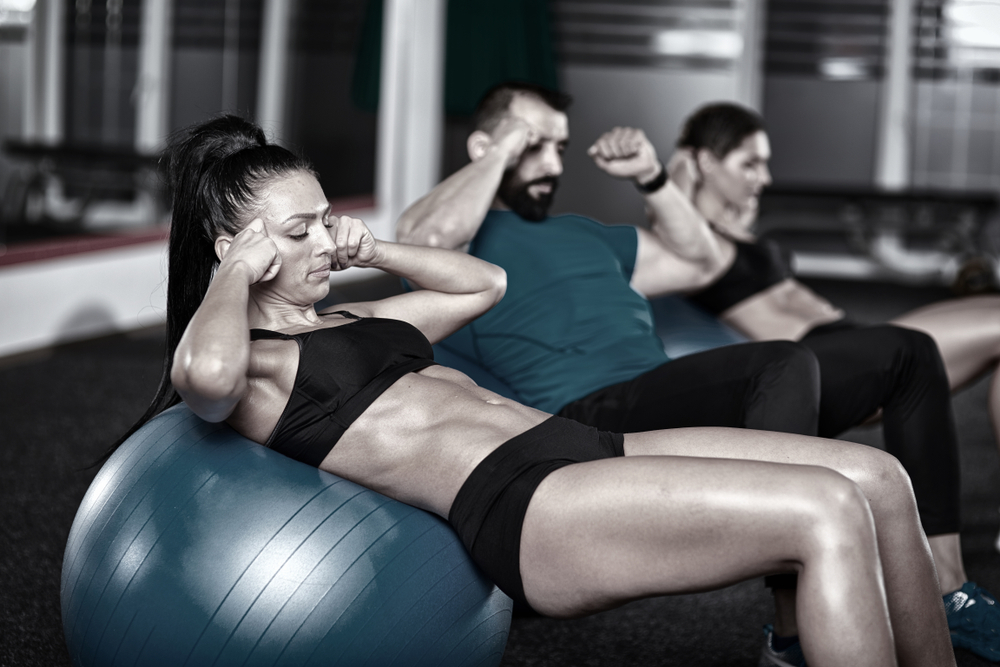Before we get in to today’s abs exercise topic, I wanted to remind you about the opportunity to get coached by me from anywhere in the world.
With The Fitness Maverick Coaching Program I’ll show you how to:
- Build your ideal physique without having to trash your body.
- Get lean without feeling like you’re eating cardboard.
- Bulletproof you from future injury, and sustainably strong for life.
- Keep on track every step of the way, and continue smashing personal bests.
Click HERE for more info, or HERE to fill in an application form.
The abs exercise you need to try
The Sicilian crunch could be the best abs exercise you’re not doing. Weighted crunch variations can play a key part in helping you develop deeply etched abs, and of these Sicilian crunches are a contender for top spot.
Aren’t crunches bad for my spine?
Don’t be a spinal flexion Nazi. Remember the spine is designed to move and handle load in all directions. Also, the main function of the rectus abdominis (a.k.a those six pack abs) is to flex the spine and assist with posterior tilt of the pelvis.

Even Prof. Stu McGill who played a large role in the spread of this misinterpreted information now advocates performing a crunch-type abs exercise for spinal health. The “McGill Crunch” is named after him.
That’s the fitness industry for you. Strange how that works.
If we’re talking pure aesthetics here, weighted crunch and leg raise variations should form a large part of your abdominal training plan. Sprinkle in some roll-out or fall-out progressions and some rotational movements too, and you’ll be ticking quite a few boxes.
Your abs are not an endurance muscle!
Nonsense. Even if we believe that a muscle built for endurance should only be trained for endurance, we’d still be wrong.
The rules of building a muscle, whether butt biceps or abs, are universal. Create a recoverable amount of mechanical tension, metabolic stress, and tissue breakdown using a rep range of around 6-15 reps.
The odd foray up to 20 reps or more would be fine too, but most time that 6-15 range works best.
Progressive overload is key too. If you’re still doing high-rep body weight crunches after years of training you might want to rethink your approach.
I’m feeling that high-rep deep burn with you, but trust me you’ll be shocked how much faster your abs will respond to a little extra load and a few less reps.

Fibre type dictates rep range, sort of…
The fibre type of a muscle is important, and might dictate how much time you spend in the higher or lower rep range for muscle building. But even then the abs still aren’t an endurance muscle.
Let’s take for example the soleus muscle, in the lower part of the calf. It’s made of around 80% slow twitch muscle fibres. Some individual genetics may change that number a little, but still, now that’s an endurance-based muscle!
Thus, the higher end of the muscle building rep range will work best when trying to grow the lower calf. Taking the Achilles out of the equation helps too, but that’s for another time.
The rectus abdominis on the other hand is around an equall portion of both fast and slow twitch muscle fibres. About 50/50.
Definitely not an “endurance muscle”.
If anything it’s those fast twitch motor units that have been neglected, too. We’re going to sort that problem right out though. That’s where Sicilian Crunches take the spotlight.
Enter the Sicilian
If you want an abs exercise that effectively loads the rectus abdominis and taps in to those fast twitch fibres, then try Sicilian crunches.
Research indicates that eccentric training activates a higher number of high-threshold motor units than typical (iso-inertial) exercise.
There are a number of ways to perform a Sicilian crunch, and you’ll see a few of my favourites below. But the one common theme is that by changing leverage factors and increasing the moment arm in the lowering phase of the exercise, you’ll be overloading the eccentric portion of the movement.
Whatever you use: Cable, dumbbell, medicine ball, plate, and so on; it’s closer to the torso on the way up (concentric) and pressed further away on the way down (eccentric).
Torque equals force times distance. It’s the same external mass, but at a greater distance from the fulcrum on the way down than way up.
So not only are Sicilian crunch variations a great abs exercise to load in a hypertrophy rep range, there’s the additional eccentric abdominal overload too. Here are a couple of my favourite variations.


Great article, thanks for posting.